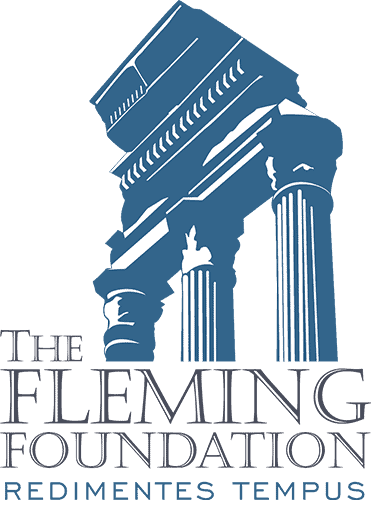The Road from Damascus The Intelligent Christian’s Guide to the Schism Pt. 4: The 8th Century Pivot
The 8th Century was the era of a great pivot. This pivot consisted in the realignment of the Roman Church—away from a Mediterranean and imperial axis, and toward a northwestern and Germanic orbit. It is impossible to exaggerate the importance of this politico-ecclesial shift for the history of the schism.
This pivot resulted, in the first place, from the challenge of Islam. The absorption of the imperial government in Constantinople in a fight for its own survival—on its eastern frontiers, in its sea-lanes, at its very gates—had consequences political and theological. In the first place, the papacy was abandoned to deal with its own barbarian problem: the Germanic Lombards who had invaded Italy in the 6th century and, since that time, had busied themselves with carving up imperial territory into their own duchies and menacing the Roman Church. Urgent papal entreaties for imperial troops fell on deaf ears in Constantinople. In the second place, there was the problem of Iconoclasm. The ensuing alienation between the Roman Church and the Roman Empire resulted in the secession of the former from the latter—which was meanwhile becoming distinctively “Byzantine.”
In the victories of the hosts of Islam, Leo III (r. 717-741), a competent soldier-emperor of Syrian stock, saw the hand of God—the hand of God turned against the empire of Constantine for the sin of idolatry. The Christians had dared to depict the Indescribable God and to bow down before His depiction and that of His Mother and the saints. And so, Leo concluded, the aniconic Muslims have prevailed over them in battle. The implicit premise was, of course, that sacred icons are idols and their veneration, idolatry—the sin most abominable to the God of the Old Testament.
In 730, if not earlier, Leo published an edict against the veneration of sacred images. Patriarch Germanos I refused to endorse the imperial policy, was deposed and replaced by the pliant Anastasios. When commanded to fall in line, Pope Gregory II (to quote Georg Ostrogorsky) “turned down the iconoclast overtures of the Emperor in an unusually caustic manner”:
“The whole West has its eyes on us, unworthy though we are,” the pope chided the emperor, “It relies on us and on St. Peter, the Prince of the Apostles, whose image you wish to destroy, but whom the kingdoms of the West honour as if he were God himself on earth…We are going to the most distant parts of the West to seek those who desire baptism. Although we have sent bishops and clergy of our holy church to them, their princes have not yet received baptism, for which they wish to receive it from ourselves alone… You have no right to issue dogmatic constitutions, you have not the right mind for dogmas; your mind is too coarse and martial.” (Cited in Eamon Duffey, Saints and Sinners: A History of the Popes, 82).
Otherwise, Gregory II remained a loyal servant to the imperial government—thus separating the political and the theological issues. This distinction soon became untenable. Gregory’s successor, Gregory III, engaged in an antagonistic correspondence with the iconoclastic emperor. When challenged that no mere king had the right to impose heresy on the Church, Leo responded, tellingly, that he was not merely a king, but a priest. The imperial fleet dispatched to punish papal intransigence was destroyed by a storm, but Leo had other means of compulsion at his disposal. He confiscated the papal patrimonies in Italy—the lands from which the Roman Church derived revenues—and seized Southern Italy and Illyricum (the Balkans) from Rome’s jurisdiction and placed them under the patriarchate of Constantinople—(although it has been suggested that this restructuring of jurisdiction should be seen as the tidying up of patriarchal boundaries, it is hard not to see a punitive intention). T hese disputed ecclesiastical territories would bedevil the relationship between the Churches in the coming centuries.
Meanwhile the popes struggled against the depredations of the Lombards. In the face of continued imperial absenteeism—the exarchate of Ravenna was the seat of the imperial majesty in Italy, but under the present circumstances the exarch was unreliable and sometimes overtly hostile—the papacy stopped paying taxes into the imperial treasury.
In his letter to the iconoclast emperor, Pope Gregory II had conjured the image of teeming western kingdoms clamoring for the spiritual patronage of St. Peter. It is to such as these that the papacy was turning. Something momentous happened circa 749, when Pepin, the major domus (“mayor of the palace”) of the Merovingian Kingdom of the Franks, wrote to Pope Zachary (the last Greek pope until the fifteenth century) and asked him whether the pope thought it appropriate that he who had real power have no royal title, while he bore that title was powerless. Clearly, Pepin was sounding the pope on a coup d’état in the offing against the Merovingian dynasty of “do-nothing” kings in whose name the mayor of the palace ruled in fact. The pope gave his implicit consent to the usurpation and Pepin packed off Childerich III, the last long-haired king of the Franks, to monastic retirement.
In 754—the same year that an eastern “council” met under the cruel Emperor Constantine V, son of Leo, at the Hieria palace and blessed the destruction of the holy images—Pope Stephen II fled from Italy, like a fugitive, and traveled north of the Alps to the court of King Pepin. Stephen had been pushed to this extremity (no pope had ever undertaken this transalpine journey) by Byzantine negligence in the face of the Lombard threat and seizure of imperial territory—or rather, from the papacy’s perspective, of the “patrimony of St. Peter.” At Ponthion in Francia, the pope crowned and anointed Pepin, and his sons Charles and Carloman, as kings of the Franks, and he bound the nobles by oaths to ever choose their kings from the stock of Pepin. The Carolingian dynasty was born by the blessing of St. Peter. The papacy had made a wager, as it were, on these Germanic upstarts—a wager that seemed to pay out, with interest, in Rome’s favor when the Franks rose to St. Peter’s defense, when King Pepin invaded Italy and restored the lands occupied by the Lombards—not to the Byzantine Empire, but to the Roman Church.
Iconoclasm was defeated for the first time in 787 at Nicaea, the city of ancient conciliar renown. Eastern Orthodox Christians today usually see this as the seventh and last time that the Eastern and Western Churches stood united in an ecumenical council. If the (Second) Council of Nicaea symbolized a rapprochement between East and West, it must be understood as a strictly theological rapprochement between the patriarchates of Rome and Constantinople, and an ephemeral one at that. The Frankish Church, now ruled by Pepin’s son Charles (better known today as Charlemagne), was alienated by the decision in favor of icon veneration promulgated by the council—(the Carolingian reaction was in part based upon a faulty translation of the conciliar decisions; but, as Prof. Thomas F.X. Noble has shown—see especially his Images, Iconoclasm, and the Carolingians—the Carolingians articulated a via media according to which both image-breaking and image-veneration were wrong; depictions of the sacred were justified for their didactic value—they disclosed the truths of the faith to the unlettered—but they were not to be foci of Christian worship or devotion). Meanwhile, Iconoclasm would soon erupt again in 802. But even more significantly, Nicaea II had clearly done nothing to heal the political breach between Rome and Constantinople. The secession of the Roman Church from the Byzantine Empire was consummated on Christmas Day in the year 800 when Pope Leo III placed a crown on the head of Charlemagne and the Roman people hailed this Frankish warlord as imperator Romanorum—emperor of the Romans. The immediate pretext for this action was provided by the usurpation of the imperial throne in Constantinople by a woman—Irene, who in 797 had orchestrated the fatal blinding of her son in whose name she had ruled as regent.
In all of this, the papacy was making a gamble. At the price of blessing Pepin’s usurpation, legitimating his dynasty, and finally crowning his son as emperor, the papacy hoped to gain a more reliable protector than the emperor in Constantinople—and even a protégé. This gamble clearly paid off. The Carolingian interventions in Italy neutralized the menace of the Lombards and restored the lands they had seized not to the empire, but to St. Peter. This was not merely the liberation of the papacy from imperial government. It was the establishment of the very foundations of an Ecclesiastical State that would endure until the nineteenth century. But what the papacy might not have expected out of the wager was the influence that these Germanic kings and their progeny would subsequently exercise over the Roman Church herself, which was increasingly caught up in a Germanic, northwestern cultural orbit. This realignment away from a Mediterranean and imperial axis would contribute decisively to the process of the emergence of two distinctive Christendoms: Latin West and Byzantine East.
In the Latin West, the coronation of Charlemagne as emperor on Christmas Day of the year 800 would be remembered as the formal transfer, by the pope, of the empire of Constantine from the Greeks to the Germans. In the Greek East it was remembered—with horror and contempt—as the beginning of the Barbarian Captivity of the Church of Elder Rome.




Thank you for this marvelous summary; not an easy task to make it succinct and understandable given our subject!
On another note, I see where Father Robert Taft passed away today. Aside from his kinship to a president and a senator, he was a giant of the Eastern Church and his work on the Byzantine liturgy was extraordinary. A major loss for East-West authentic ecumenism. Vichnaya pamyat. (eternal memory.)
Thanks for bringing this to my attention, Mr. Colin. As far as Fr. Robert is concerned, May his memory be eternal! For those interested, see the link:
https://aleteia.org/2018/11/02/fr-robert-taft-feisty-ecumenist-and-liturgical-historian-dies-at-86/